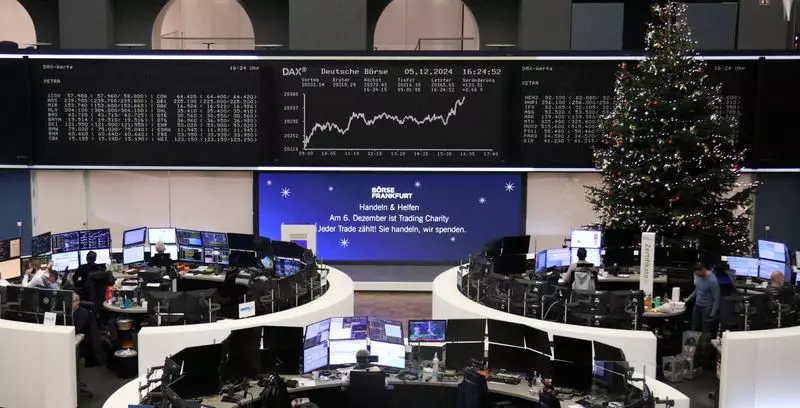On Thursday, European financial markets witnessed a slight downturn as investors cast a wary eye over forthcoming decisions from the European Central Bank (ECB). The pan-European STOXX 600 index opened on a positive note but ultimately experienced a decrease of 0.1%. This minor decline reflects the underlying concerns that have gripped the euro zone, as economic indicators signal slowing growth and increased political trepidation. Investors are particularly focused on the ECB’s anticipated rate cut, which they expect will be a response to the lingering pressures on the economy.
The performance of various sectors paints a mixed picture. Retail stocks notably lagged, indicating potential vulnerabilities in consumer confidence and spending, which are crucial for economic recovery. In contrast, the automotive sector showed resilience and led the gains, suggesting that some areas within the European market are navigating these turbulent times effectively. Additionally, bank shares, particularly those sensitive to interest rate fluctuations, recorded a 0.4% increase. This suggests that while there is concern over the broader economic climate, traders remain optimistic about banks benefitting from a potential rate reduction.
As speculation mounts over the ECB’s next move, current market conditions have prompted traders to assign an 81% probability to a 25 basis points cut and a 19% probability to a more aggressive 50 basis points reduction. This indicates a heightened expectation for intervention as inflation aligns closer to target levels amidst a faltering economy. The ECB’s official rate decision, set to be announced later in the day, is keenly anticipated, as it could set the tone for monetary policy throughout the euro zone in 2024.
Marija Veitmane, head of equity research at State Street Global Markets, shared insightful commentary regarding the contrasting approaches of European and U.S. central banks. She criticized European authorities for not acting decisively enough in light of slowing economies, contrasting this with the preemptive cuts being observed in the U.S. market. The divergence is palpable; while the STOXX 600 has only climbed 8.5% year-to-date, it starkly lags behind the S&P 500, which boasts a remarkable 27.6% gain. This comparative stagnation raises questions about the long-term attractiveness of European equities relative to their American counterparts.
Amidst this broader market context, individual company performance has also been telling. For instance, SThree Plc plummeted by 26% after expressing caution regarding its profit outlook, signaling the fraught climate for recruitment amid ongoing economic challenges. Conversely, Diageo Plc saw a 3.8% rise after UBS upgraded its assessment to “buy,” reflecting optimism for its U.S. operations. Additionally, Lonza Group experienced a significant boost, up by 6.1%, following its announcement to divest from its capsules and health ingredients business—an indication of strategic pivots that may enhance operational focus.
The European stock landscape remains complex, shaped by regulatory anticipation, sector disparities, and individual corporate trajectories. As economic uncertainties continue to unfold, investors are left navigating a cautious yet hopeful path forward.

